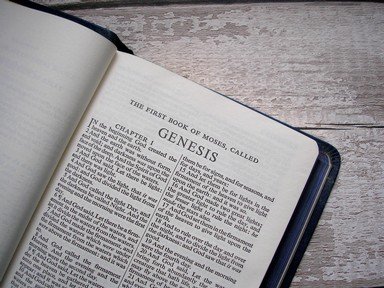Quiz Answer Key and Fun Facts
1. Your flat-packed universe is a starter set: "in the beginning," before you bought it, "God created the heavens and the earth," so those are included. You should start by making sure that the box contains everything it should. According to Genesis 1:2 (New International Version), which of these things should NOT be true?
2. It's easiest to work with proper lighting, so let's make that the next step. According to Genesis 1:3, what is the correct way to light up the universe?
3. This universe is full of water, which makes it hard to admire properly. It's time to separate the waters of the earth from the waters of the heavens. Genesis 1:6 (New International Version) gives advice on accomplishing this. What sort of structure should you build?
4. Construction is exhausting, but there's no good place to rest: it's time to make dry land appear. Going by Genesis 1:9, how should this be done?
5. I hope you're checking your work, by the way. In Genesis 1, God is meticulous about doing so at each step. How does He check His work?
6. It's time to introduce life! Specifically, it's time for "seed-bearing plants and trees... that bear fruit with seed in it." Your to-do list is already quite long, though, and it's time to delegate. According to Genesis 1:11-12 (New International Version), who or what actually produces the plants?
7. With abundant plant life laboring to add oxygen to the atmosphere, you can revisit the problem of light. Uniform illumination was all right at first, but a sun, moon, and stars will be better still! Make sure you get the details right: according to Genesis 1:14 (New International Version), what other purpose must they serve?
8. Let's add some animals to the mix! According to Genesis 1:20-23, which of these creatures should be made first?
9. Rest easy: creation is nearly finished! All you need now are people to fill it with. What instructions does Genesis 1:27 (New International Version) give for the making of mankind?
10. One piece of organizational work, and you're done! If your creation is to sustain itself, you'll need to give the creatures some nourishment. Going by Genesis 1:30 (New International Version), what food should you give "to all the beasts of the earth"?
Source: Author
CellarDoor
This quiz was reviewed by FunTrivia editor
LeoDaVinci before going online.
Any errors found in FunTrivia content are routinely corrected through our feedback system.

